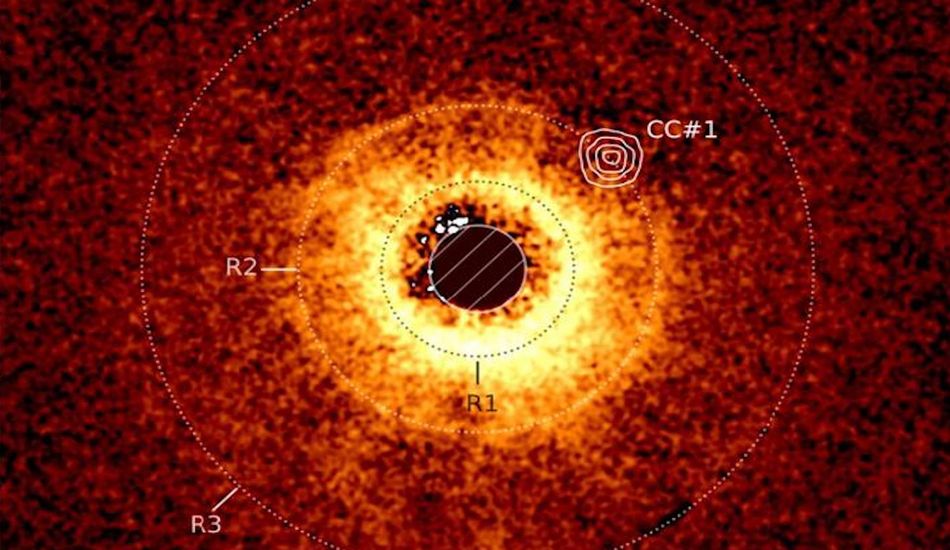
James Webb Telescope Achieves Milestone: Uncovers its First Exoplanet!
Webb Telescope Reveals a Hidden Exoplanet for the First Time!
Since its launch, the James Webb Space Telescope has been revolutionizing our understanding of the cosmos. It has primarily focused on analyzing the atmospheres of distant exoplanets, searching for signs of habitability. However, in an unexpected turn, Webb has now achieved something remarkable: it has directly discovered its own exoplanet, named TWA 7b, within a young planetary system shrouded in a swirling cloud of dust and debris.
You see, spotting exoplanets is incredibly tricky. Imagine trying to see a firefly next to a searchlight – the parent stars are overwhelmingly brighter, making it difficult to observe the much fainter planets orbiting them. To overcome this challenge, astronomers used a clever tool called a coronagraph, an attachment for Webb’s Mid-Infrared Instrument. This device essentially creates an artificial solar eclipse, blocking the star's intense light and revealing the fainter objects around it.
Using the coronagraph, the team pinpointed the TWA 7 system, a stellar neighborhood only a few million years old. The TWA 7 system features three distinct rings, with one particularly narrow ring that immediately caught the scientists' attention. Nestled within the heart of this ring, they found the exoplanet TWA 7b.
TWA 7b is considered a sub-Jupiter planet, larger than Neptune but smaller than Jupiter. What's fascinating is its location. It orbits its star at a considerable distance – 52 astronomical units (AU), where 1 AU is the Earth-Sun distance. This large distance and the planet's mass perfectly explain the gaps observed in the protoplanetary disk, marking the first direct observation confirming planet-disk interactions during the early stages of planetary system formation.
This discovery marks a significant leap forward in exoplanet research. It opens new avenues for imaging faint, Saturn-like planets and, crucially, for characterizing the atmospheres of non-irradiated planets similar in size to Saturn. In the grand scheme of things, this discovery teaches us invaluable lessons about the complexities involved in finding lightweight planets and furthering our understanding of planetary system formation.
Source: Gizmodo